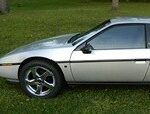For owners of the classic Nissan 300zx, understanding the intricacies of its onboard diagnostics system is crucial, especially when considering modern upgrades or diagnostic tools. A common question arises: can you simultaneously connect multiple devices to your 300zx’s OBD1 port, effectively bridging the gap towards OBD2 functionality? Let’s delve into the technical limitations and explore what’s truly feasible.
The original OBD1 system in the 300zx, while functional, operates on a fundamentally different principle compared to the more advanced OBD2 standard. OBD1 utilizes a simpler electrical standard where communication between a diagnostic tool (plugged into the Consult port) and the Engine Control Unit (ECU) happens through a series of electrical pulses along a single data line. This system works well for single-device interaction, but complications arise when you attempt to introduce a second device into the mix.
Imagine wanting to connect both a diagnostic scanner and a performance monitoring tool simultaneously. The core challenge lies in how OBD1 manages communication. In essence, for multiple devices to function without conflict, each would need to “listen” to the data line and only transmit when it’s clear, a method similar to how ethernet networks manage data flow. However, OBD1 was not designed with this “multi-master” concept in mind. It operates on a “single-master” principle, where only one external device is expected to communicate with a single ECU at any given time.
You might wonder about the presence of other ECUs in the 300zx, such as those for HICAS (High Capacity Actively Controlled Steering) or the automatic transmission (A/T). The OBD1 system addresses these through a specific communication protocol. When initiating communication, the external device sends a “hello” message specifying which ECU it intends to interact with – be it the engine control (ECCS), A/T, HICAS, or even the air conditioning (A/C) ECU. The addressed ECU then responds and maintains communication until another “hello” message targets a different ECU.
This contrasts sharply with OBD2 systems, which are designed for multi-master communication. In OBD2, various devices can communicate with any sensor or ECU on the network. A device simply requests data from a specific sensor, and the sensor responds with the requested information. This inherent architecture in OBD2 allows for seamless operation of multiple devices simultaneously, a capability absent in the OBD1 framework of the 300zx.
While solutions like “ECU Talk” might employ clever workarounds to potentially proxy communication for a second device, the fundamental limitation of OBD1’s single-master protocol remains. Directly connecting multiple devices to a standard 300zx OBD1 port for simultaneous operation is generally not considered feasible due to these inherent technical constraints. While continuous advancements in aftermarket solutions may emerge, understanding the foundational differences between OBD1 and OBD2 is key to managing expectations for your 300zx diagnostic and monitoring capabilities.
